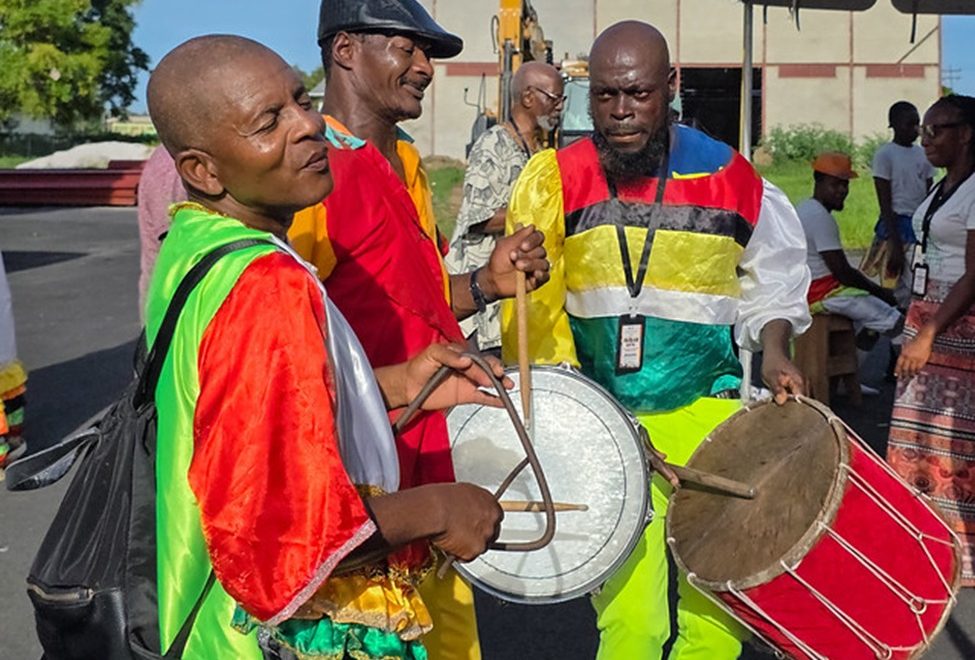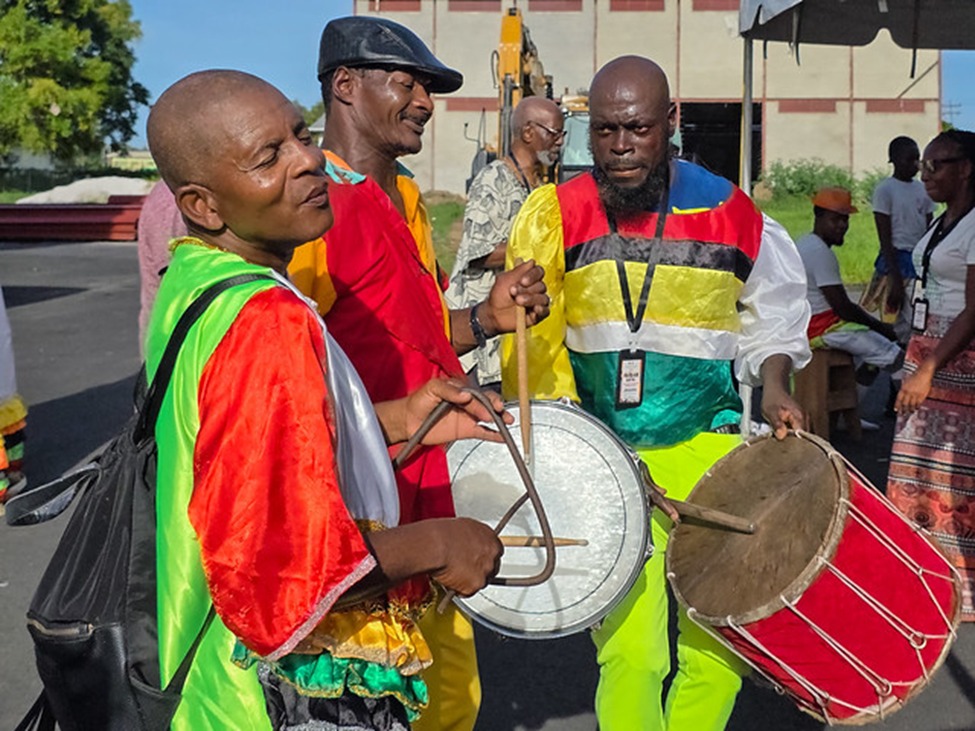Preserving Tradition: Keeping Masquerade Alive


Reviving the Spirit of Guyana’s Masquerade: A Tradition on the Road to Renewal
You could hear it long before you saw it: the heartbeat of drums, the high-pitched whine of the fife, the clang of a bell that seemed to echo from another world. For many, that rhythm stirred excitement. For others, it sparked fear. But for all of us who grew up in Guyana, masquerade was sacred — alive, powerful, and unforgettable.
Today, however, it is a tradition we nearly lost.
Thanks to the efforts of Merundoi Inc., with support from UNESCO, masquerade is on its way to revival. A powerful two-day symposium held at the National Racquet Centre on Woolford Avenue brought together musicians, dancers, cultural elders, and young performers under the theme of saving a heritage UNESCO now officially lists as “in urgent need of safeguarding.”
More Than Dance: The Spirit of Masquerade
Masquerade is no ordinary performance. It’s theatre, history, spirituality, resistance, and joy — all wrapped in one. With flouncers, Bam Bam Sally, Mother Sally, and the infamous “mad cow” who chased curious children from behind windows, masquerade was once the pulse of Guyanese Christmas.
For decades, full masquerade bands filled the streets, blending music, movement, and costume into a storm of colour and sound. But with changing times, the rhythms grew quieter. Younger generations stopped learning the dances, drummers and fife players faded away, and what once dominated Christmas streets dwindled to fragments performed at heritage events.
As cultural commentator Al Creighton aptly noted:
“You don’t have masquerade if you don’t have full bands on the road.”
A Gathering of Rhythm and Resolve
The symposium brought old wisdom face-to-face with youthful passion.
-
Raphael Waldron, raised in masquerade by his grandfather in Victoria, declared: “Masquerade is our culture. I never put it down. I just love it too much.”
-
Learie McKenzie, who leads four active bands in Region Two, proved that the flame still burns brightly in some parts of the country.
-
Timolyn Barclay, researcher with Merundoi, presented an audit showing 11 surviving community masquerade bands and 14 schools with youth groups — though many students fail to transition into full adult bands.
The event was more than talk. Masks and costumes were being made on site — characters taking shape in real time, with cloth, wire, and tradition in every stitch.
Building a Future for Masquerade
Love alone won’t save this tradition. Revival needs structure, vision, and financial support. The formation of an interim steering committee to establish the Guyana Masquerade Association was a turning point. This body will focus on:
-
Documenting and digitising masquerade traditions
-
Creating a Masquerade Register and digital archive
-
Developing a masquerade language dictionary
-
Building school curricula in collaboration with the Ministry of Education
-
Ensuring the artform becomes not only preserved but a sustainable livelihood for dancers, musicians, and costumers.
The Urgent Challenge: Music
One challenge towers above the rest: the lack of musicians. Without the live drum and the piercing fife, masquerade loses its heartbeat. As Merundoi’s survey revealed, this shortage threatens the survival of the tradition itself.
Another concern is masquerade’s absence from Mashramani, Guyana’s premier cultural celebration. Without its rightful place on the national stage, how will younger generations value it? The interim committee has vowed to fight for its return, not as token representation, but as a cornerstone of Guyanese culture.
A Shared Heritage
While deeply rooted in African traditions, masquerade also carries Indo-Guyanese expressions. As Vidyaratha Kissoon reminded participants, elements of masked dance and performance exist in Hindu and Islamic practices. This makes masquerade not just African or Indian — but wholly Guyanese: shared, diverse, and rich with meaning.
Looking Toward Christmas 2025
The vision is bold: by Christmas 2025, masquerade bands will once again take over the streets of Georgetown, New Amsterdam, Queenstown, and villages across Essequibo. Real bands, with live music, flamboyant flouncers, and the rhythm that shakes your very chest.
Because masquerade isn’t something you simply watch — it’s something you feel, something you live. If you ever dove under your mother’s bed or peeked from behind the jalousie window when the “cow” came by, you already know.
Masquerade is Guyana’s heartbeat. And now, with collective action, it’s finding its way back to life.
